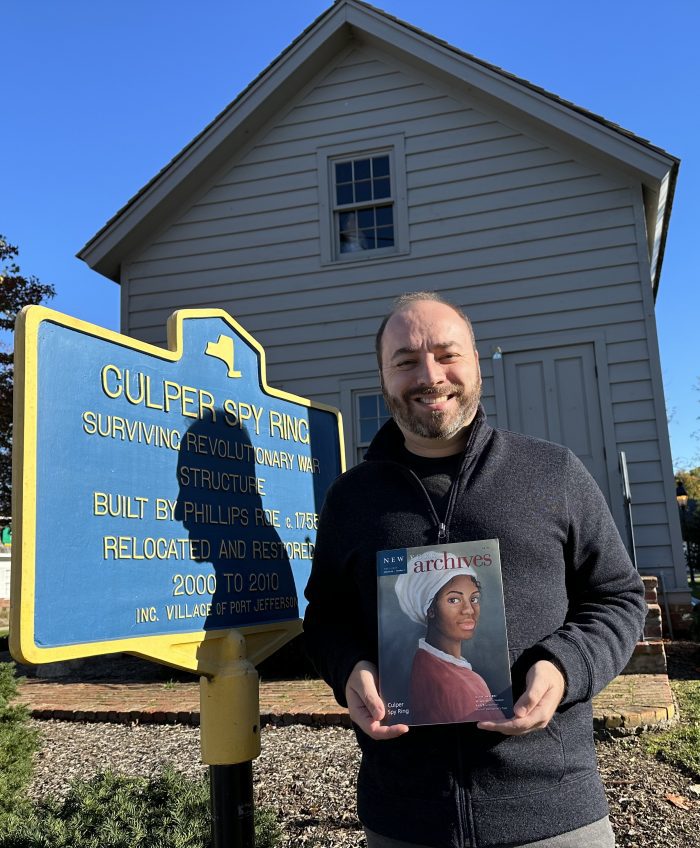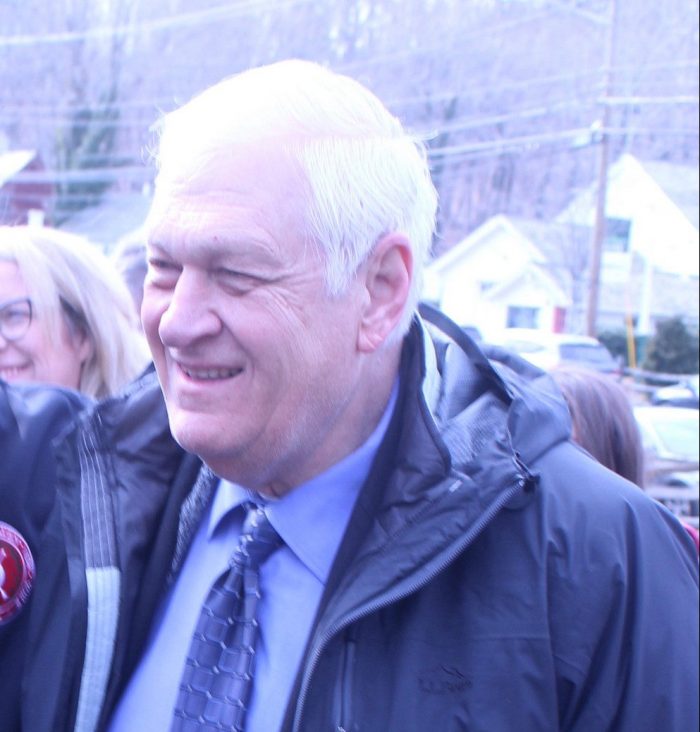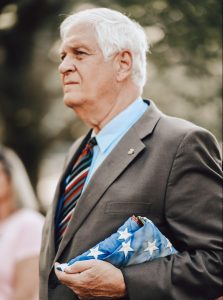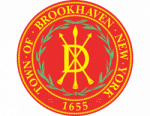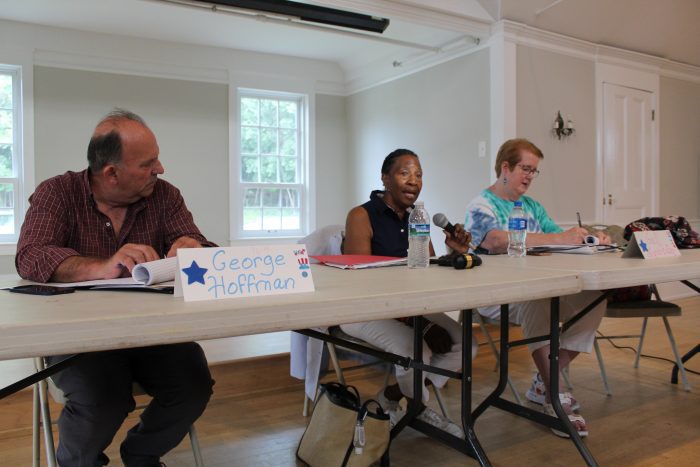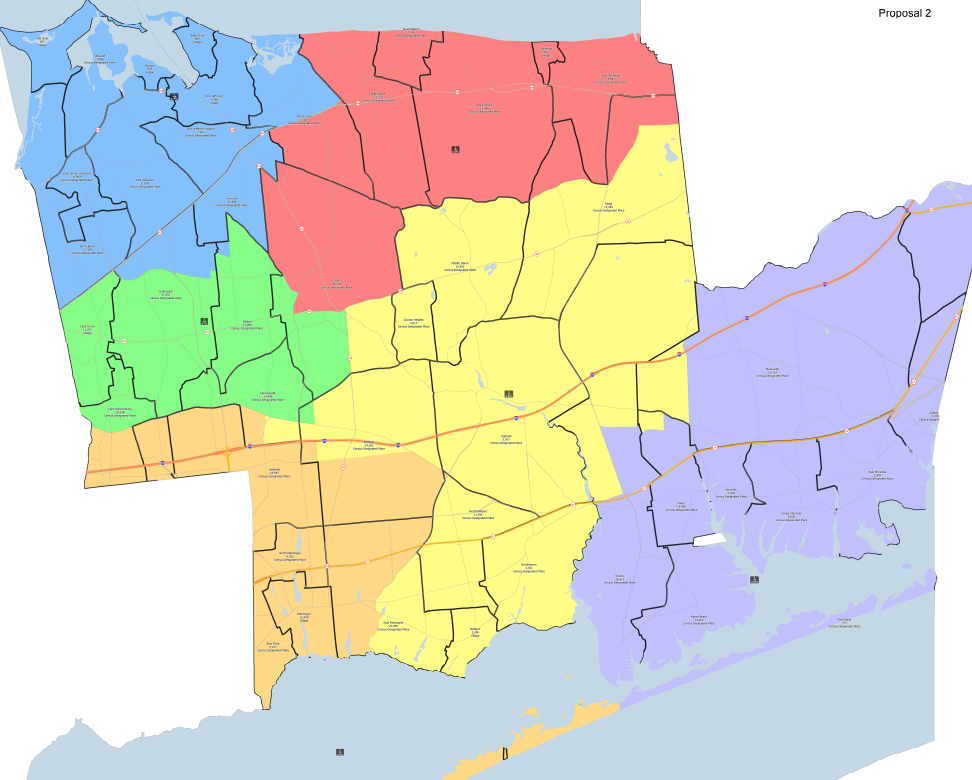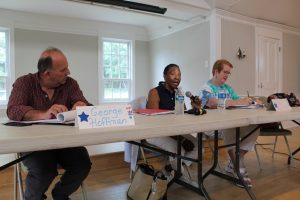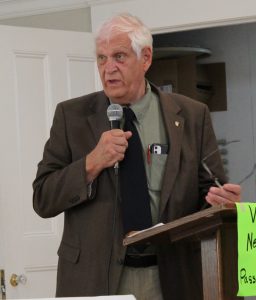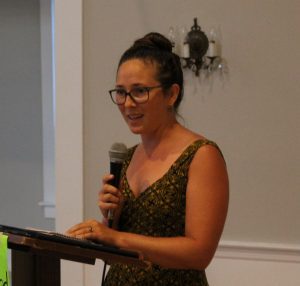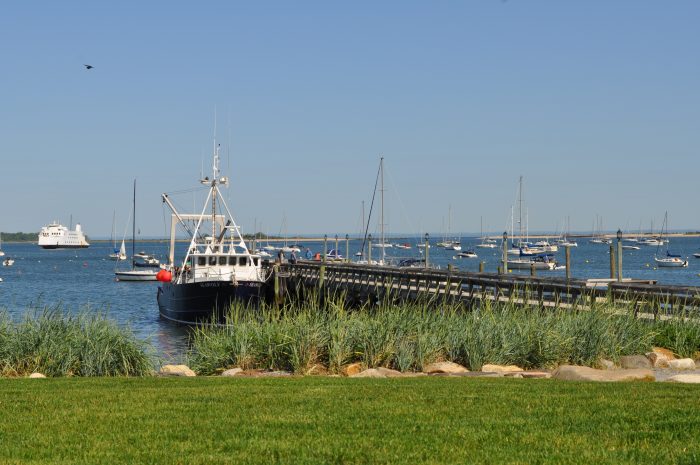By Julianne Mosher
Living in Port Jefferson for more than half his life, Mark Sternberg always knew the village had a story.
“I grew up here and I always wanted to know the absolute history of Port Jeff,” he said. “I wanted to get to the bottom of it.”
The North Shore of Long Island played a big role during the Revolutionary War. Books, movies, television shows and college courses have preached that the Culper Spy Ring — a network of American spies active during the British occupation of New York City and organized by Maj. Benjamin Tallmadge and Gen. George Washington — was based primarily on Port Jefferson’s next-door neighbor, Setauket.
Sternberg, a lawyer by trade and Port Jefferson high school graduate of the Class of 2001, first became interested in the history growing up and learning these stories and legends. Interested in his hometown, he began reading about its history, eventually getting his hands on “The Seven Hills of Port: A Documented History of the Incorporated Village of Port Jefferson” by Patricia Hansell Sisler and Robert Sisler.
“I had a professor at New York University, a summer program for producing, and one of our projects was to pitch a show about something you love,” Sternberg said. “I thought that the Culper Spy Ring would be a great TV show.”
And that school project became a passion.
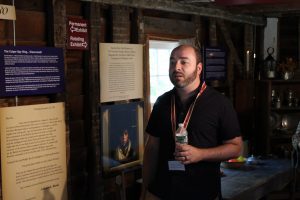
In 2013, Sternberg found a letter that tied two Port Jefferson brothers to the ring. Retrieved from a chimney of what is now the Drowned Meadow Cottage Museum years ago, the letter (dated Dec. 21, 1780) informed loyalist soldier Nehemiah Marks’ comrades that Phillips and Nathaniel Roe helped supply Setauket-based spy Caleb Brewster with information to pass on to the patriots.
Sternberg located the letter archived at the University of Michigan.
“I had a lot of people telling me the basis for the claim was a legend,” he said. “It was made up.”
But it was eventually authenticated and now hangs in the museum, which was originally Phillips Roe’s home, located at 141 W. Broadway.
“Mark has done the real hard research,” said George Hoffman, co-founder of the Setauket Harbor Task Force. “I think he has certainly put Port Jeff village back into the mix. … People always used to call them the Setauket spies, but it’s pretty clear that the Roe brothers played a central role due to his research.”
Hoffman added that Sternberg has brought “fresh eyes to old history.”
Finding the letter sparked something in Sternberg making him want to discover more.
After going away to school in Atlanta, Georgia, and then NYU, he left the quaint village he used to call home, moving to Manhattan for 12 years.
Then, due to the COVID-19 pandemic, Sternberg and his now-wife decided to move back out to the Island, settling in East Patchogue.
“When I moved back to Long Island, I wanted to get involved more with the house,” he said.
Working closely with Port Jefferson Village historian Chris Ryon, he began doing heavy, original research into the Roe family.
“Mark has been working, really concentrating, on this Culper spy history, and then delving into it more so than anybody else that I know,” Ryon said. “He has gone beyond what a lot of historians would look up.”
Ryon admired that, while working full-time, Sternberg spends most of his free time continuing to learn about the Roe family and how Port Jefferson was involved with the Revolutionary War.
“He’s traveled all over the place, looking at the primary documents, and by doing that, he’s discovered many more things, and a lot of mistakes that people have repeated,” he said. “Mark is so saturated in his knowledge of this, he picks up on things that people don’t understand are important.”
Since Sternberg’s initial find of the letter almost 10 years ago, he has continued to research and advise on the history of the brothers and how the home was part of a much bigger piece of history that was almost forgotten.‘He has changed the way people think about Culper Spy Ring.’
— Chris Ryon
“He has changed the way people think about Culper Spy Ring,” Ryon said. “He has enlightened us — he has raised the bar.”
Sternberg said that he is continuing to help with the Drowned Meadow Cottage Museum, setting up exhibits and preparing for its full opening to the public. He also is working alongside Len Carolan at Port Jeff-based Bayles Boat Shop to recreate a whaleboat from the American Revolution era. The boat shop is an offshoot of the Long Island Seaport and Eco Center — a nonprofit dedicated to the preservation of maritime history on the Island. Sternberg will be acting as a historian on the project to get the boat as close as possible to what it was.
“Mark has been instrumental in tying up what we’re doing in building this boat and the history of [the whaleboats],” said Carolan, president of the Bayles Boat Shop. “And especially how the history is connected to Caleb Brewster.”
Sternberg also recently published new findings about the Strong family in “New York Archives” magazine this past fall.
“People ask me, ‘Why are you so into history?’ and honestly, I’m more into solving mysteries,” he said. “There’s so much more to find and it’s that dopamine rush when you find out something about your hometown’s history you would have never found out before.”
Sternberg is happy to volunteer his time to find out what really happened up here almost 250 years ago.
“Why wouldn’t I volunteer? I love my hometown,” he said. “Any of my extra time I can spend here talking about the history, I wouldn’t have it any other way.”
TBR News Media recognizes Sternberg’s valuable local historical research by making him a 2022 Person of the Year.

